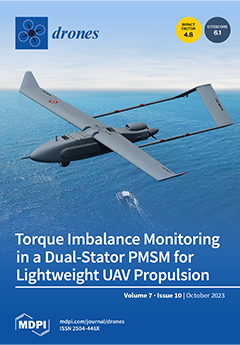Vespa velutina is an ecosystem disruptor that causes annual damage worth KRW 170 billion (USD 137 million) to the South Korean beekeeping industry. Due to its strong fertility and high-lying habitat, it is difficult to control. This study aimed to develop a system for the control of
V. velutina nests using drones for detection and tracking the real-time location of the nests.
Vespa velutina nest image data were acquired in Buan-gun and Wanju-gun (Jeollabuk-do), and artificial intelligence learning was conducted using YOLO-v5. Drone image resolutions of 640, 1280, 1920, and 3840 pixels were compared and analyzed. The 3840-pixel resolution model was selected, as it had no false detections for the verification image and showed the best detection performance, with a precision of 100%, recall of 92.5%, accuracy of 99.7%, and an F1 score of 96.1%. A computer (Jetson Xavier), real-time kinematics module, long-term evolution modem, and camera were installed on the drone to acquire real-time location data and images.
Vespa velutina nest detection and location data were delivered to the user via artificial intelligence analysis. Utilizing a drone flight speed of 1 m/s and maintaining an altitude of 25 m, flight experiments were conducted near Gyeongcheon-myeon, Wanju-gun, Jeollabuk-do. A total of four
V. velutina nests were successfully located. Further research is needed on the detection accuracy of artificial intelligence in relation to objects that require altitude-dependent variations in drone-assisted exploration. Moreover, the potential applicability of these research findings to diverse domains is of interest.
Full article





